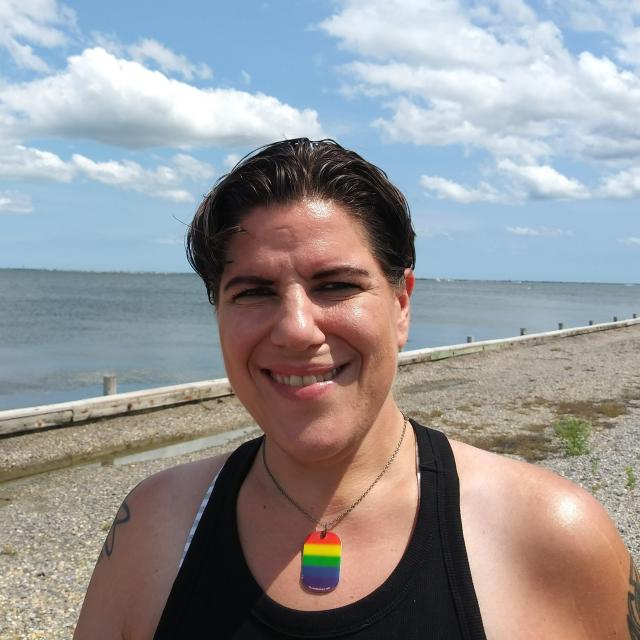
May 30, 2023
Centering Environmental Justice: In Conversation with Edison Energy’s Transportation Electrification Team
By Elana Knopp, Senior Content Writer

Members of Edison Energy’s Transportation Electrification Team share their insights on what true environmental justice looks like in the EV space, the detriments of a “one-size-fits-all” approach, and the role of equity and engagement in finding impactful solutions.
Today, disadvantaged communities continue to face disproportionate economic and health burdens of higher emissions, noise, and poor air quality. These impacts are most visible across America’s transportation systems, whose benefits and costs continue to be unequally distributed across communities that have been historically overburdened and underserved.
This has been underpinned by a long history of federal, state, and local discriminatory policies that persist across America’s transportation systems. In many cities and towns, practices such as redlining, intentional routing of highways through disadvantaged communities, and other exclusionary housing policies have led to racially segregated neighborhoods, with minority residents bearing the brunt of poor air quality, increased heat and noise pollution, and physical barriers to opportunity and mobility.
“If we’re talking about transportation, then we’re talking about the pollution that comes with it, including tailpipe emissions, noise pollution, and congestion, and then looking at the communities that are most affected by that,” said Chris Crockett, a manager on Edison Energy’s Transportation Electrification (TE) team. “You have people who live close to highways or, because of infrastructure being built, communities have been cut in half and now they can’t get around the same way they used to. Environmental justice is addressing those communities that have been disproportionately impacted and giving them an opportunity to speak up, which helps us form solutions for them.”
That includes governments providing communities with the tools they need to succeed, then following through until a meaningful solution is implemented, said Imani Love, an analyst on the TE team.
“Governments often rope in frontline communities into conversations but they kind of just stop there and don’t continue that conversation to really give the community what it needs to succeed,” she said. “There are equity and equality components to environmental justice, so it’s critical that we give people what they need to make sure they have the same opportunities that other communities have.”
By definition, environmental justice starts with the fair treatment and meaningful involvement of all people to develop, implement, and enforce environmental laws, regulations, and policies – regardless of race, ethnicity, geographic location, or income.
This dictates that no population bears a disproportionate share of negative environmental impacts resulting from industrial, municipal, and commercial operations or from the execution of federal, state, and local laws and policies.
Crockett notes that equity does not mean a single solution to address the various challenges that frontline communities have historically faced.
“Not everybody wants the same thing,” Crockett said. “Certain communities don’t even want to own cars – instead, they want to have access to public transportation. So, for us to recommend electric vehicles and the charging infrastructure in these communities – that actually isn’t a solution for them because they don’t need it or want it. That is not an environmental justice solution in that case.”
Getting to a solution has always been challenging, said Mark Gooden, an analyst on the TE team – particularly if it doesn’t align with the business case.
“Those get discarded even if they have the desired outcome that we’re looking for,” he said. “The definition of environmental justice isn’t the same for everybody. It can change from person to person, from business to business, and from priority to priority. And in terms of execution, how do we still get to an end result that benefits people without falling into the trap of arguing over what the definition should be and then not making progress?”
Iman Nordin, a senior analyst on the TE team, noted that as advisors, addressing environmental justice issues can be a challenge due to the vast differences between communities, recognizing that every community’s needs are different and cannot be addressed with a one-size-fits-all approach.
“Generally, a lot of these environmental justice initiatives are a reaction to something happening in their community like oil spills, landfills, and coal plants,” she said. “It’s very targeted and nuanced within that community itself. So, how do we streamline these very specific situations that happen in different communities?”
Edison Energy’s TE team has been exploring tangible, impactful solutions to address these challenges, recognizing that the assessment of current client operations and objectives is integral to creating workable, customized solutions to help mitigate environmental injustice across transportation.
The Biden administration’s Justice40 Initiative, created to address decades of underinvestment in disadvantaged communities, aims to address gaps in transportation infrastructure and public services by providing at least 40 percent of the benefits from many of the U.S. Department of Transportation (USDOT) grants, programs, and initiatives flow to disadvantaged communities. This is achieved through identifying and prioritizing projects that benefit rural, tribal, and urban communities facing barriers to affordable and reliable transportation.
Trent Montsma, a senior analyst on the TE team, said that he encountered these kinds of situations during his time at a public service utility.
“We were trying to get some strategies around just transitions and shift away from fossil fuels, and there were some communities that were very reliant on fossil fuels, particularly the Navajo Nation,” he said. “There were very large coal plants there slated to close and there were entire communities reliant on those jobs. But there was also the pollution that came with that, so trying to find a just transition and create electrical generation jobs that could be offered there. This is about making sure that no one is left behind in this transition and finding strategies around the environmental impacts in certain communities as well.”
Another challenge is equating the incidental benefits of fleet electrification with environmental justice, according to Crockett.
“You need to make sure that you’re meaningfully engaging the community,” he said. “If you put charging infrastructure in a frontline community that didn’t want it, that can have long-term consequences. You might accidentally increase the value of that area and then their taxes go up and they get ousted.”
Partnership with Edison creates the opportunity for clients to strategize and lead purposeful measures with communities they directly impact, providing an opportunity to identify and address the needs around transportation as the transition to electric vehicles continues to ramp up.
This means that project developers may need to face some harsh realities and make some tough decisions, said Gooden.
“I think that a lot of different entities will have to confront the fact that they are inadvertently contributing to the problem,” he said. “But I’m of the mindset that we can put together a pathway to educate people on what to do next. Environmental justice is a brand-new lane, and we’re trying to get to real solutions that help the community, that elevate people. A lot of choices have been made that just don’t incorporate the communities that get disproportionately affected by those choices. We have an opportunity here to remove that narrative and speak for those who have been excluded in decision making and to help work toward solutions that benefit everybody.”
 Let us meet you where you are in your Transportation Electrification journey. Click here to learn more about our Transportation expertise.
Let us meet you where you are in your Transportation Electrification journey. Click here to learn more about our Transportation expertise.
Join Our Mailing List
Learn more in Energy Driven
A bi-monthly publication of Edison’s Transportation Electrification team delivering timely, impactful news happening across the evolving transportation sector.
Sign up
Elana Knopp
Manager, Content & Communications
My primary responsibilities include leading content development, creating thought leadership pieces with Edison team members and industry experts, and crafting client engagement & communications strategies.
I’ve been an investigative reporter for most of my career, covering New Jersey politics, social justice issues, education, and the environment. I also served as the communications director for an environmental organization in New Jersey. Most recently, I served as a renewable energy reporter covering a lot of the projects and initiatives that encompass Edison’s work. In fact, I DID cover Edison’s work!
I am the recipient of several journalism awards, including from the New Jersey Press Association (NJPA) and the Garden State Journalists Association. I have also been recognized by Montclair University’s Center for Cooperative Media, featured in Politico’s New Jersey Playbook, and have served as a guest lecturer at Rutgers University.
A successful journalist must have exceptional reporting and writing skills, a rapport with people from all walks of life, mega street smarts, superhuman tenacity and VERY thick skin. I’d like to think I’m bringing that to my work here at Edison!
Educational Background
B.A. in English - Rutgers University




